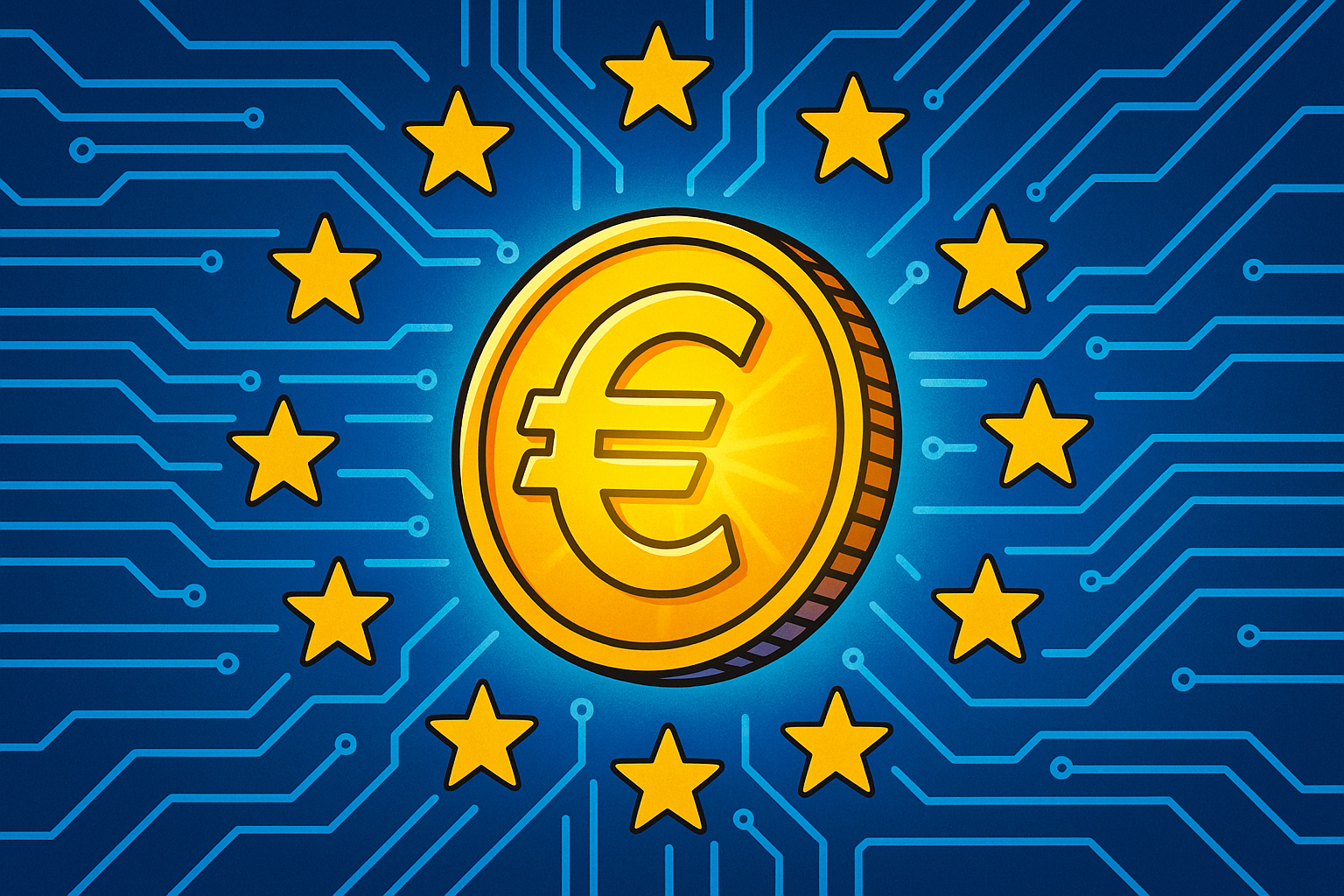Europe’s Banks Want Their Own Stablecoin. What does it mean?

Intro
The crypto world has gotten used to U.S. dominance when it comes to stablecoins.
Whether you’re swapping on Uniswap, parking cash in DeFi, or wiring money across borders, odds are you’re dealing in USDT (Tether) or USDC (Circle) — both tied to the dollar.
But that might change. Nine European banks, including ING, UniCredit, CaixaBank, and Danske Bank, have teamed up to launch a euro-backed stablecoin. The plan? Roll it out in 2026, under the watchful eye of the EU’s shiny new MiCA regulations.
This is big. It’s not some scrappy startup trying to reinvent money — it’s Europe’s banking establishment stepping directly onto the crypto stage. And the implications stretch from Brussels to Binance.
Why the Banks Are Doing This Now
Let’s start with the obvious question: why now?
The answer is simple: regulatory clarity. Europe’s Markets in Crypto-Assets (MiCA) framework is live, and it lays out clear rules for e-money tokens (i.e. fiat-backed stablecoins). Think mandatory reserves, strict audits, and full transparency. For the first time, banks can play in the digital asset sandbox without worrying they’ll get smacked by regulators for it.
But it’s not just about rules. It’s about sovereignty. Right now, Europe’s financial plumbing leans heavily on U.S. stablecoins. That’s not a great look when you’re trying to keep your currency relevant in a digital era. Launching a euro stablecoin is Europe saying, “Hey, the dollar doesn’t get to own this space forever.”
And finally, there’s timing. The European Central Bank’s digital euro project is crawling along, unlikely to launch before 2029. Banks aren’t waiting. Their stablecoin could act as a “preview edition” of a digital euro — offering faster payments, 24/7 transfers, and programmability years before the official version arrives.
What This Stablecoin Could Offer
If the banks deliver what they promise, this won’t just be another token. It could mean:
- Instant settlement across borders, skipping old-school SWIFT wires.
- Programmable money, with conditions built into payments (think escrow or subscriptions).
- Integration with tokenized assets, making it easier to trade digital bonds, stocks, or real estate.
- Mainstream legitimacy, since it’s backed by some of Europe’s biggest banks.
In theory, it’s money with both the trust of TradFi and the flexibility of crypto. The best of both worlds.
The Big Risks (and There Are Plenty)
Of course, if this were simple, it would have been done already. There are some real risks here:
- Adoption isn’t guaranteed. USDT and USDC are already deeply embedded in crypto markets. Why would traders or DeFi protocols switch to a euro-based option? Convincing people to care about the euro peg will be a huge hurdle.
- Central bank friction. The ECB isn’t exactly thrilled about private stablecoins stepping on its toes. Officials have warned about “undermining monetary control.” Brussels seems fine with moving forward anyway, but don’t underestimate regulatory politics.
- Bank funding risk. If customers start moving deposits into stablecoin wallets instead of bank accounts, banks could lose cheap funding. That’s not something they’ll be excited about.
- Execution. Stablecoins only work if people trust the reserves. One redemption hiccup, one audit scandal, or one mismanaged reserve, and this whole project could crumble overnight.
- Reputation. If a scrappy crypto project fails, the community shrugs and moves on. If ING or UniCredit screws this up, it’s a headline scandal.
What It Means for Crypto (and You)
For years, stablecoins were the rebel product — dreamed up by crypto startups, often in regulatory gray zones, moving faster than banks or governments. Now the incumbents are saying, “We’ll take it from here.”
If this euro stablecoin takes off, it could:
- Spark euro-denominated DeFi, giving projects in Europe a local alternative to dollar-dominated liquidity pools.
- Put pressure on the ECB to move faster with its own digital euro.
- Create a playbook for other regions (imagine Asian banks rolling out a yen or won stablecoin).
- Challenge Tether and Circle by giving traders a fully regulated, bank-backed option.
But if it flops? It’ll reinforce the idea that banks can’t innovate and that crypto rails still belong to startups and degens.
Nancy’s Take
This is one of those “watch closely” stories.
A euro stablecoin by nine major banks is a bold play. It’s got the muscle, the regulatory blessing, and the geopolitical timing. But it’s also a giant experiment. And history tells us that banks don’t always do “new” well. Just ask anyone who tried to use their bank’s mobile app in 2012.
So should you care? Absolutely. If this works, it could reshape how we think about stablecoins, payments, and even the balance of power between the dollar and euro. If it doesn’t, it’ll be another case study in how legacy finance keeps tripping over Web3.
Either way, this is Europe planting its flag. And that’s a story worth following.
As always, make sure you stay connected the conversation in our Discord and follow me on X for daily crypto, DeFi, and fintech updates! Don't forget to also download the Ethos App!












